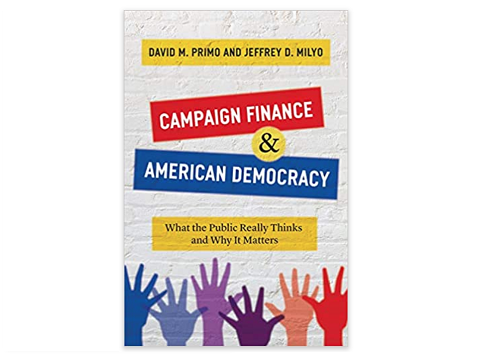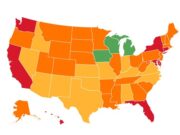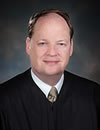There’s a new book out on “the appearance of corruption” – a fundamental issue in First Amendment law – written by two professors who have been studying this issue for 20 years. This obscure phrase allows government regulation of political expression if public “awareness” of possible “inherent” “opportunities for abuse” might “reduce confidence in Government.” This test for a “trust deficit” affects millions of Americans’ political activities every year. If you’re a litigator in this area, you should read this book; it will be cited.
For more than 40 years, courts have been applying the “appearance of corruption” standard on the basis of political consultants’ testimony, public opinion polls, and media coverage. Because actual corruption in government is very rare, the “appearance of corruption” standard has become the principal basis for regulating financial support of political candidates. An entire constellation of groups has emerged to argue that limiting campaign contributions is the way to remedy a “trust deficit” in government, and most Americans believe it.
“But what if the conventional wisdom is fundamentally wrong?”[1] asks Campaign Finance and American Democracy: What the Public Really Thinks and Why It Matters, the new book from Professors David Primo and Jeffrey Milyo and the University of Chicago Press.[2] In other words, what if the public’s “trust deficit” in government[3] is based on ignorance or wrong information? Or what if the restrictions on speech imposed in the hope of restoring faith in government actually make things worse? Primo and Milyo show that the public’s information is wrong, and these restrictions do make things worse.
Political speech receives the highest degree of First Amendment protection.[4] But that right is not absolute. “Congress may regulate campaign contributions to protect against corruption or the appearance of corruption.”[5] The Supreme Court has wrestled since 1976 with those two concepts – “corruption or the appearance of corruption” – which are the only constitutional grounds for limiting political campaign contributions.[6]
“Corruption” is straightforward: a “financial quid pro quo: dollars for political favors.”[7] “That Latin phrase captures the notion of a direct exchange of an official act for money.”[8]
But what’s an “appearance of corruption?” That’s not at all clear, and never has been. The “appearance of corruption” looks at the “trust deficit” – the perceptions of the public at large of “confidence in the system of representative Government.”[9]
That broad “trust deficit” standard ties in many unreliable tests: “Congress may permissibly limit ‘the appearance of corruption stemming from public awareness of the opportunities for abuse inherent in a regime of large individual financial contributions’ to particular candidates.”[10] To find “public awareness” of inherent “opportunities for abuse,” lower federal courts have relied on political campaign consultants, community activists, and political campaigns’ polling. And, as the 2016 Presidential campaign showed, none of those sources are particularly accurate.
But the threat to “confidence in the system of representative Government,” must be real, not just “mere conjecture.”[11]
And courts must be careful not to confuse traditional political hallmarks of democracy with the appearance of corruption: “government regulation may not target the general gratitude a candidate may feel toward those who support him or his allies, or the political access such support may afford,”[12] or the “appearance of mere influence or access.”[13] “Ingratiation and access . . . are not corruption.”[14] “They embody a central feature of democracy – that constituents support candidates who share their beliefs and interests, and candidates who are elected can be expected to be responsive to those concerns.”[15] In Williams-Yulee v. The Fla. Bar, the Court carefully distinguished between fundraising by politicians (who “are expected to be appropriately responsive to the preferences of their supporters”) and elected judges (“In deciding cases, a judge is not to follow the preferences of his supporters, or provide any special consideration to his campaign donors.”).[16]
How are we to thread this needle, consistent with the rules of evidence? The Courts of Appeal are split. Several require specific evidence of recent highly publicized corruption resulting in a fall in public confidence. Others simply call on political consultants, fundraisers, and pollsters to show public opinion on trust in government without regard to actual incidents of corruption, highly publicized or otherwise. In 2018 and 2019, the Supreme Court rejected two different requests to review this circuit split on the evidentiary standard: one from Austin, Texas and the other from Montana.
So, are the First Amendment rights of millions of politically active Americans being determined by public opinion polls or community activists’ most outrageous rants? And wouldn’t that result in mischief? “The most zealous and aggressive advocates of restriction can make accusations, whether well founded in fact or not, and then use the very fact that some people believe the charges as a reason to justify regulation.”[17]
And what if Americans’ “public awareness” about inherent “opportunities for abuse” are just plain wrong? Does that undercut forty years of Supreme Court constitutional rulings based on an unfounded belief that campaign finance restrictions will cure the “trust deficit?” Those are the underlying questions in Primo and Milyo’s new book.
This is not a new topic. There are publications on both sides of the issue, but this book is both new and different. As the authors explain, “ours is the first book-length treatment of public opinion and campaign finance written after the Citizens United decision, and it is the first research to contrast public opinion and the scientific consensus on the role of money in American politics.”[18]
For a densely supported book, the writing is clear and current: “Taken to its logical conclusion, [Prof. Larry] Lessig’s argument could be used to justify nearly all restrictions on free expression if things just look bad. But politics is not all puppies and rainbows. Politics is about conflict, and today we have profound disagreements about the direction in which the country should head.”[19]
Primo and Milyo have been researching this subject together for more than twenty years and served on the 2015 bipartisan task force to determine the state of knowledge in campaign finance, independently set up by Bob Bauer, Ben Ginsberg, and Nate Persily, three leaders in election law. The book includes not only specific data (and lots of it), but detailed statistical analyses of prior studies and surveys. Even better, it looks at Americans’ knowledge about and faith in the states’ campaign finance laws, not just the federal system. Primo and Milyo characterize 60,000 individual observations across all 50 states from more than 50 studies between 1987 and 2017.
They find that “the public is stunningly misinformed” about campaign finance laws and practices.[20] That result echoes many other experts’ analyses over the last twenty years.[21] Prominent media coverage – most of it wrong – may be one of the culprits here, including TV shows like The Colbert Report and The Daily Show.[22]
And cynicism? Primo and Milyo find that “nearly half of Americans, and 40 percent of True Believers [extremely vigorous proponents of campaign finance restrictions], think that government regulations on political activities are used to harass political opponents ‘almost always’ or ‘very often,’ and only 11 percent of Americans (16 percent of True Believers) think that this occurs ‘hardly ever’ or ‘never.’”[23]
Even worse: “No matter how we slice the data, we find a remarkably robust relationship: support for campaign finance restrictions is increasing in the belief that these laws are used by government officials to harass political opponents.”[24] That is also the conclusion of many practitioners in the campaign finance system: campaign finance has been weaponized and is used more often that way.
So, what’s the authors’ bottom line? It’s simple and – in light of the Supreme Court’s history in the area – scary:
The bottom line is this: we find that there simply is no meaningful relationship between trust in state government and state campaign finance laws during this time period. … we want to be clear that this is a major finding running counter to forty years of jurisprudence, as well as reformers’ promises and scholarly claims that reform is critical to maintaining or restoring citizens’ faith in the integrity of democracy.[25]
Thus, Primo and Milyo argue, “campaign finance reform is the wrong cure for the ‘Trust Deficit’”[26] that underlies judicial recognition of an appearance of corruption. “If Americans see corruption in many common political activities – and if those perceptions hinge on the identity of the individuals or groups involved – then we wonder exactly what the Supreme Court’s ‘appearance of corruption’ standard means in practice.”[27]
“One possibility for these findings is that the promises associated with reforms like Clean Elections are illusory and far exceed the realities of what changes in campaign finance law can achieve. This failure to bring about meaningful change in state politics may then leave supporters (in the case of Clean Elections, Democrats) even more disillusioned with the politics in their state.”[28] In other words, campaign finance reform not only doesn’t “cure” the problem of confidence in government, it actually makes it worse.
The American public appears to understand that conclusion to some degree. “These results suggest that the more the public knows about existing campaign finance laws, the more content they are with existing laws and the less supportive they are of new laws – especially in an election year when they see the campaign finance system in action.”[29]
Similar analyses of flawed assumptions have been used recently to reverse long-standing First Amendment precedents. For example, Janus v. AFSCME[30] overruled Abood v. Detroit Board of Ed.,[31] at least partly because the Abood standard “wrongly denied First Amendment rights,” was unworkable in practice, and depended on “unsupported empirical assumption.”[32]
There’s much more in this book, and it will likely appear in future court opinions. If you work in this area, you should read this book and keep it by your side while drafting your papers or reading others’ work.
Barnaby Zall is a constitutional lawyer and U.S. Supreme Court practitioner from Friday Harbor, Washington.
[1] Campaign Finance and American Democracy at 3.
[2] David Primo and Jeffrey Milyo are Academic Advisors to the Institute for Free Speech.
[3] Campaign Finance and American Democracy at 153.
[4] Eu v. San Francisco County Democratic Central Comm., 489 U.S. 214, 223 (1989) (The First Amendment “‘has its fullest and most urgent application’ to speech uttered during a campaign for political office.”).
[5] McCutcheon v. Fed. Election Comm’n, 572 U.S. 185, 191 (2014).
[6] Buckley v. Valeo, 424 U.S. 1, 26-27 (1976).
[7] Fed. Election Comm’n v. National Conservative Political Action Comm., 470 U.S. 480, 497 (1985).
[8] McCormick v. United States, 500 U.S. 257, 266 (1991); McDonnell v. U.S., 136 S. Ct. 2355, 2372 (2016).
[9] Buckley, 424 U.S. at 27 (quoting U.S. Civil Serv. Comm’n v. Nat’l Ass’n of Letter Carriers, 413 U.S. 548, 565 (1973)); Nixon v. Shrink Missouri Government PAC, 528 U. S. 377, 390 (2000) (“[T]he cynical assumption that large donors call the tune could jeopardize the willingness of voters to take part in democratic governance.”).
[10] McCutcheon, 572 U.S. at 207 (quoting Buckley, 424 U.S. at 27 (emphases added)).
[11] Id. at 210 (“We ‘have never accepted mere conjecture as adequate to carry a First Amendment burden.’”) (quoting Nixon v. Shrink Missouri Government PAC, 528 U.S. at 392).
[12] Id. at 192.
[13] Id. at 208.
[14] Citizens United v. Federal Election Comm’n, 558 U.S. 310, 360 (2010).
[15] McCutcheon, 572 U.S. at 192.
[16] 135 S. Ct. 1656, 1666-68 (2015).
[17] Ronald M. Levin, Fighting the Appearance of Corruption, 6 Wash. U. J.L. & Pol’y 171, 178 (2001).
[18] Campaign Finance and American Democracy at 3.
[19] Id. at 34.
[20] Id. at 51.
[21] Id. at 52.
[22] Id. at 53.
[23] Id. at 119.
[24] Id. (emphasis in original).
[25] Id. at 137.
[26] Id. at 153.
[27] Id. at 159.
[28] Id. at 150.
[29] Id. at 114.
[30] 138 S. Ct. 2448 (2018) (mandatory union dues violate freedom of speech and association of government employees).
[31] 431 U.S. 209 (1977).
[32] 138 S. Ct. at 2460, 2478, 2483.














